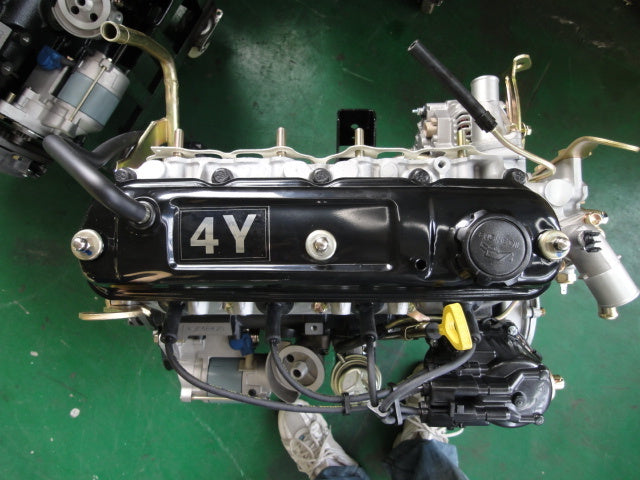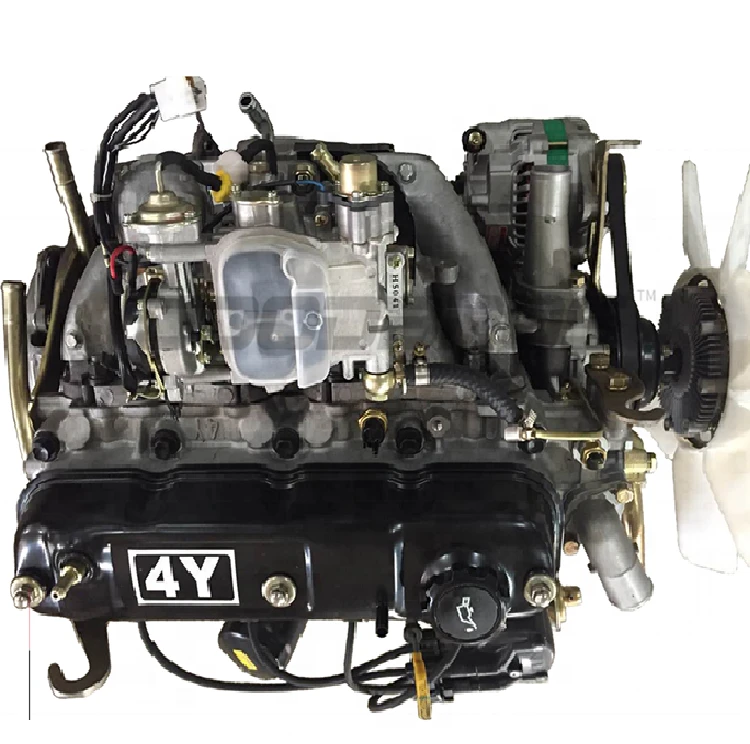Why the Engine Is the most effective Choice for Performance and Efficiency in Your Automobile
The engine continues to be a critical element in automobile style, mainly due to its considerable influence on both performance and effectiveness. As improvements in modern technology make it possible for smaller sized engines to deliver impressive power while enhancing fuel economic climate, the integration of attributes such as turbocharging and crossbreed systems becomes increasingly important. These developments not just enhance driving experience however additionally address environmental worries. Nonetheless, the question develops: just how do these elements coalesce to redefine our understanding of automobile efficiency? Exploring this balance exposes much deeper understandings right into the future of engine design.
Understanding Engine Types
Understanding the various kinds of engines is essential for enhancing performance and efficiency in automotive design. The primary engine kinds consist of inner burning engines (ICE), electrical engines, and hybrid systems, each offering unique advantages and limitations.
Internal combustion engines, which can be further categorized right into gas and diesel variations, count on the combustion of gas to create power. Fuel engines typically provide higher RPMs and better velocity, while diesel engines are known for their torque and fuel efficiency, making them perfect for heavy-duty applications.
Electric engines, on the other hand, make use of electrical motors powered by batteries or fuel cells. They provide instant torque shipment, resulting in smooth acceleration and reduced discharges. The efficiency of electric engines is significantly greater than that of ICEs, making them a prominent option for eco-conscious customers.
Crossbreed systems integrate both internal burning and electric engines, leveraging the strengths of both technologies. They maximize fuel consumption by making use of electric power at reduced rates and switching to gasoline or diesel for greater speeds or larger tons.
Selecting the right engine kind is necessary for achieving wanted efficiency metrics and environmental sustainability in modern automotive engineering.
The Impact of Engine Dimension
Engine size often plays a crucial duty in identifying a vehicle's efficiency and performance. Usually measured in liters or cubic centimeters, engine size directly influences the power outcome and torque attributes of an automobile.
Nonetheless, raised engine dimension frequently correlates with decreased fuel efficiency. Larger engines consume more fuel, leading to higher emissions and operational costs. Consequently, manufacturers must balance the need for power with the demand for gas economic situation. Smaller engines can deliver adequate performance for day-to-day driving while advertising far better performance, making them a preferred option in small and mid-size cars.
Furthermore, innovations in engine layout, such as turbocharging and straight fuel injection, permit smaller sized engines to achieve power degrees similar to their larger equivalents. This fad stresses the value of not entirely focusing on engine dimension however also taking into consideration overall vehicle layout and innovation (4y engine). Eventually, the impact of engine dimension on performance and efficiency emphasizes the requirement for customers to assess their specific driving requirements and choices when selecting a lorry
Advanced Engine Technologies
Advancements in engine technologies have dramatically reshaped the landscape of automobile efficiency and performance, building upon the foundational ideas developed by engine dimension. Notably, developments such as turbocharging and straight gas shot have allowed smaller sized engines to supply power degrees previously connected with bigger equivalents. Turbochargers compress air entering the engine, allowing for boosted power outcome without an equivalent rise in engine dimension, while straight shot enhances gas shipment, boosting combustion effectiveness.
In addition, variable shutoff timing systems have actually become a critical technology, allowing engines to adjust valve procedure based upon driving problems. This flexibility boosts both efficiency during acceleration and fuel efficiency throughout travelling. Crossbreed and electric engine innovations even more illustrate the shift in automotive design, incorporating typical inner burning engines with electric motors to make best use of performance while minimizing discharges.
Moreover, developments in materials scientific research have actually resulted in lighter, much more durable engine parts, additionally improving performance and long life. The assimilation of sophisticated electronics and engine control devices likewise permits real-time changes, making certain ideal performance across numerous conditions. Jointly, these sophisticated engine technologies not just enhance lorry performance yet likewise add to an extra sustainable auto future, demonstrating the ongoing development of engine design.
Harmonizing Power and Effectiveness
Striking an equilibrium in between power and efficiency is critical in contemporary auto style as manufacturers look for to satisfy significantly rigid emissions guidelines while satisfying customer demand for performance (4y engine). The challenge depends on optimizing engine features to provide durable power outcome without pop over to this site giving up fuel economic situation
To attain this balance, designers utilize various methods, such as turbocharging, which enhances engine power by compeling in more air, permitting a smaller sized engine displacement that enhances gas effectiveness. Variable shutoff timing innovations additionally play a considerable role, allowing engines to readjust their efficiency features based on driving problems, therefore enhancing both power and effectiveness.
Furthermore, improvements in products and manufacturing techniques have actually caused lighter engine elements, which decrease total automobile weight and enhance gas efficiency without endangering power. Hybrid innovations have actually additionally become a viable option, combining typical interior combustion engines with electrical powertrains to supply a boost in performance while keeping lower exhausts.

Future Patterns in Engine Design

Additionally, the development of innovative materials, such as high-strength alloys and light-weight compounds, is set to change engine elements. These products not only minimize weight but likewise improve thermal effectiveness, thereby enhancing efficiency. Additionally, makers are exploring variable compression ratios, permitting engines to adapt to different driving problems, enhancing both power outcome and gas economic climate.
Better, the rise of expert system and device discovering in engine design is allowing anticipating upkeep and real-time efficiency optimization. This technology can cause engines that self-adjust for optimal efficiency based on driving patterns.

Conclusion
In conclusion, the engine works as a critical component in achieving optimal performance and effectiveness in contemporary lorries. Advanced modern technologies, such as turbocharging and hybrid systems, enhance power output while reducing fuel usage and discharges. The interplay between engine size and style continues to develop, driving advancements that stabilize thrilling efficiency with ecological sustainability. As vehicle design progresses, the concentrate on developing effective, powerful engines will stay vital in forming the why not try here future of transport.
In addition, innovations in engine layout, such as turbocharging and straight gas shot, enable smaller sized engines to attain power degrees similar to their larger counterparts.Technologies in engine modern technologies have considerably reshaped the landscape of auto efficiency and effectiveness, building upon the fundamental ideas established by engine size. Turbochargers press air going into the engine, allowing for increased power result without a corresponding boost in engine size, while straight shot enhances fuel shipment, enhancing burning effectiveness.
Hybrid and electrical engine innovations better highlight the shift in automobile design, incorporating conventional inner combustion engines with electric motors to take full advantage of performance while minimizing emissions.
Jointly, these advanced engine innovations not only boost car performance however additionally contribute to an extra sustainable vehicle future, showing the continuous advancement of engine design. (4y engine)
Comments on “Understanding the Mechanics Behind the 4Y Engine’s Power and Durability”